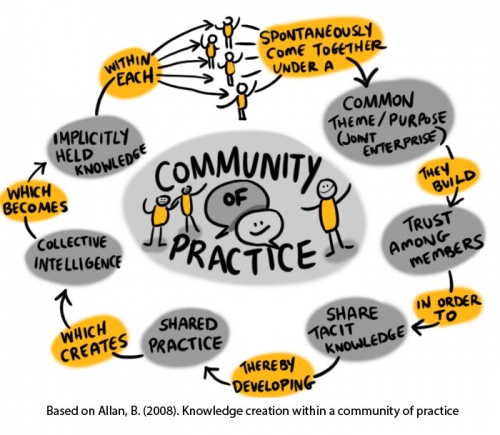A good collaborative community may reflect the guiding principles found within a community of practice, which has been defined as a “group of people who share a concern or a passion for something (domain) they do, and learn how to do (practice) it better as they interact regularly” (Lave & Wenger, 1998). To better understand the role of communities of practice, read the post from Dr. Tony Bates: The Role of Communities of Practice in a Digital Age (Tony Bates).
Communities of practice generally have three main characteristics:
- Domain: a shared knowledge and skill within a focused area
- Community: individuals converging and learning together
- Practice: sharing strategies, tools, resources, and examples through knowledge exchange

The aim is to broaden our network(s) to include cross-disciplinary skills and insights, and the online world enables us to do just that. You will find that you can often meet peers and potential collaborators through chance online meetings, in discussion groups, and/or by using social networking tools such as Twitter or Mastodon.
—Henry Ford
Communities of practice
A good collaborative community may reflect the guiding principles found within a community of practice, which has been defined as a “group of people who share a concern or a passion for something (domain) they do, and learn how to do (practice) it better as they interact regularly” (Lave & Wenger, 1998). To better understand the role of communities of practice, read the post from Dr. Tony Bates: The Role of Communities of Practice in a Digital Age (Tony Bates).
Communities of practice generally have three main characteristics:
The aim is to broaden our network(s) to include cross-disciplinary skills and insights, and the online world enables us to do just that. You will find that you can often meet peers and potential collaborators through chance online meetings, in discussion groups, and/or by using social networking tools such as Twitter or Mastodon.
Course sponsor
Localisation partner
Technology partner